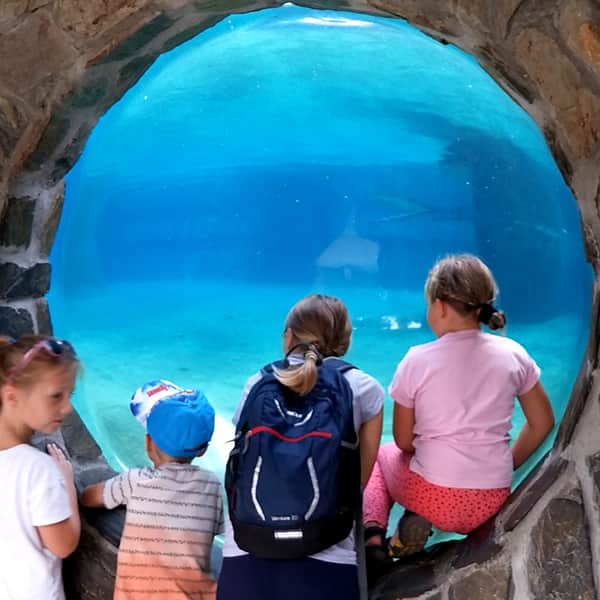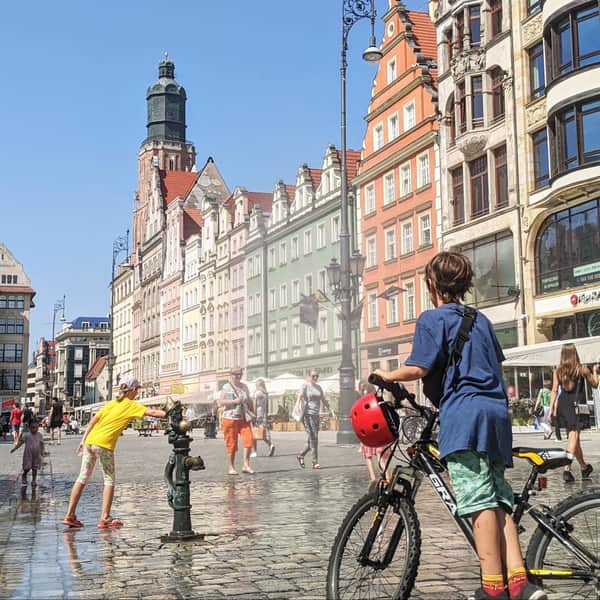Ślęża - a mountain full of magic! Discover its history, trails, and attractions
Town: Sobótka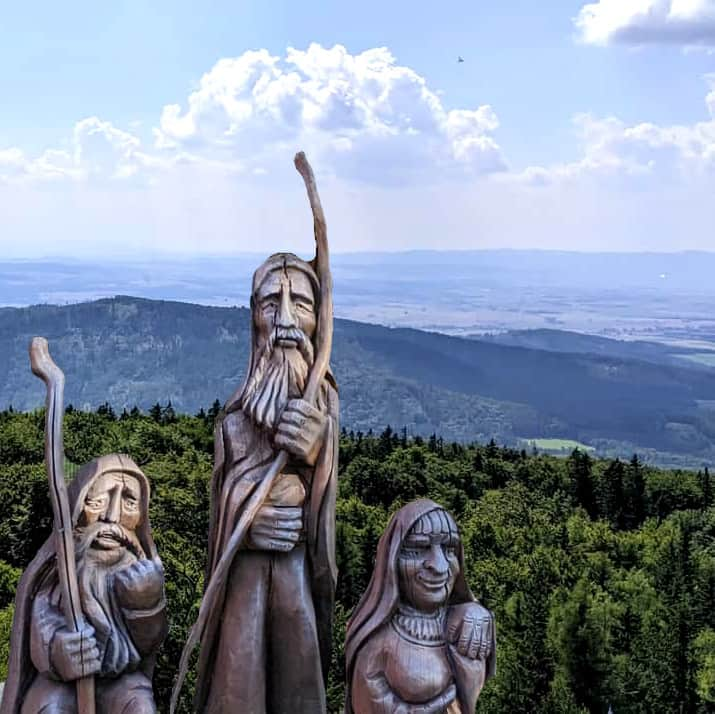
check_circle Slopes
check_circle Mainly in the shade
check_circle Restaurant or bar nearby
check_circle Accessible by train
Ślęża - Silesian Olympus
The Ślęża Massif stands out significantly among the flat, surrounding areas. It was once even believed to be an extinct volcano! So it's no wonder that for centuries it was a place of worship for the tribes that inhabited these lands. Druids paid tribute to the Sun on its summit, while they went to the nearby Radunia to honor the Moon. It's not surprising that it was considered the abode of gods and called the "Silesian Olympus."
Is Ślęża an ancient volcano?
The shape of Ślęża does indeed resemble a volcanic cone, but its isolation from the surrounding massifs gives the impression that someone accidentally placed it in a random location. However, contrary to associations, Ślęża owes its conical shape to the glacial cover that once surrounded it. Its peak protruded above the surface of the ice sheet by only about 100 meters, in the form of a nunatak. According to the latest research, the mountain massif is likely a remnant of an oceanic crust.
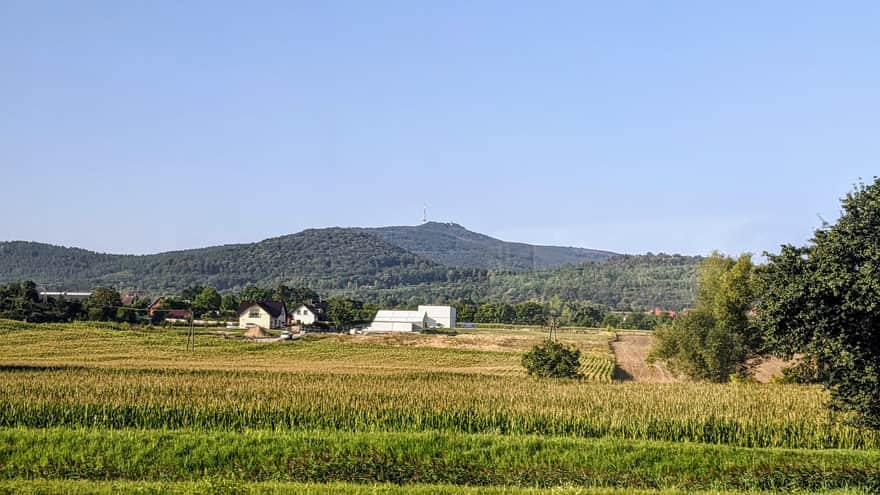
The easiest trail to Ślęża
The easiest, shortest, and most popular trail to the summit is the yellow trail from Przełęcz Tąpadła. There is a fairly large forest parking lot and a bus stop at the pass - in the summer season, buses from Wrocław run here on weekends. The yellow trail is a wide, rocky road that is also used to transport supplies to the Ślęża Tourist House located at the top.
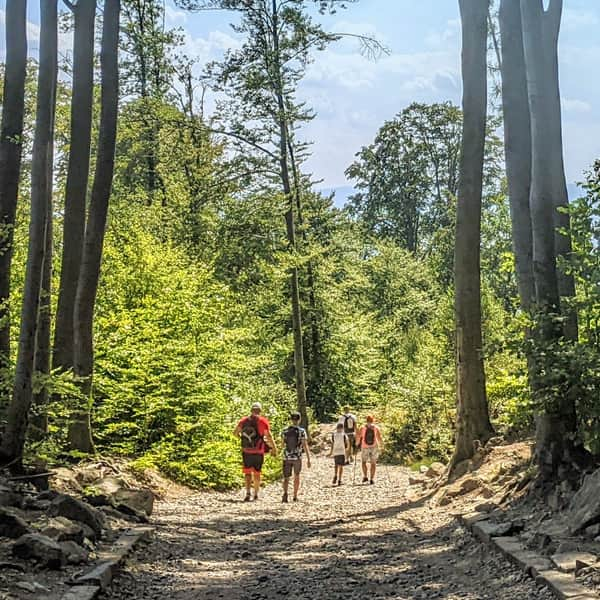
Medium
Easiest trail to Ślęża - yellow from Tąpadła Pass
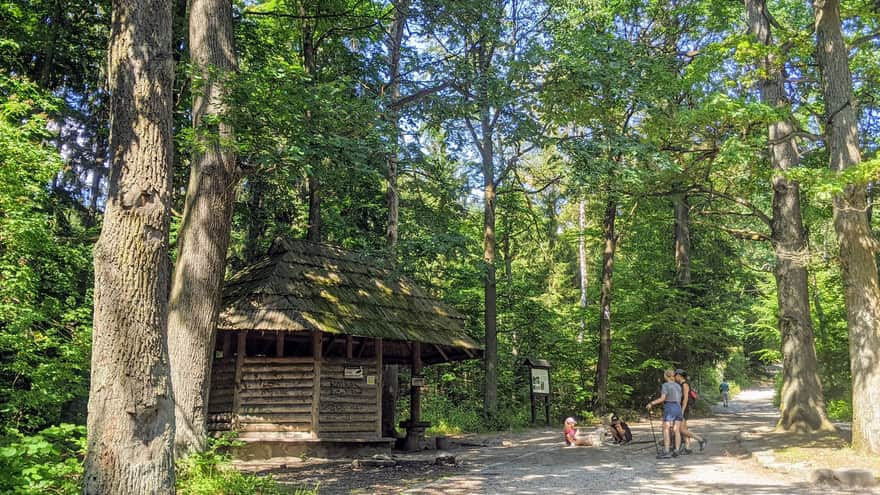
The most interesting trail to Ślęża
For those who like challenges, we recommend climbing Ślęża through the "Skalna" rock reserve located on the western slope of Ślęża, which has the largest concentration of rock formations in the park. The trail is undoubtedly one of the most demanding routes to Ślęża, but also the most interesting and satisfying! It leads through huge boulders and rock gates. An older, experienced preschooler should be able to handle the difficulty of the trail.
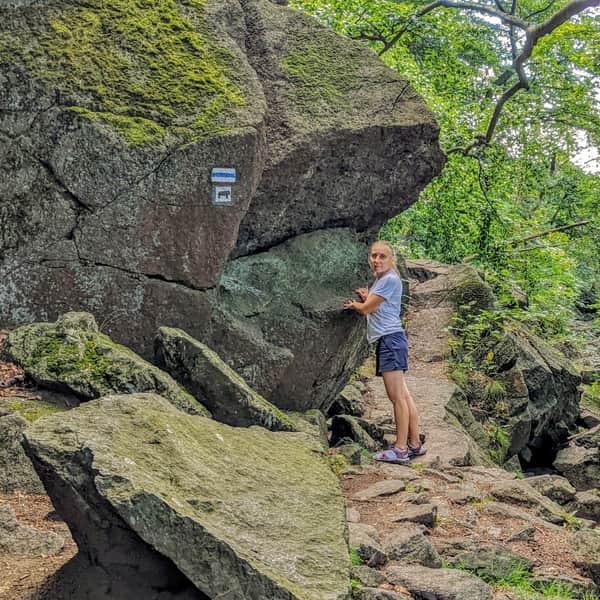
Difficult
The Most Interesting Trail to Ślęża through the "Skalna" Reserve
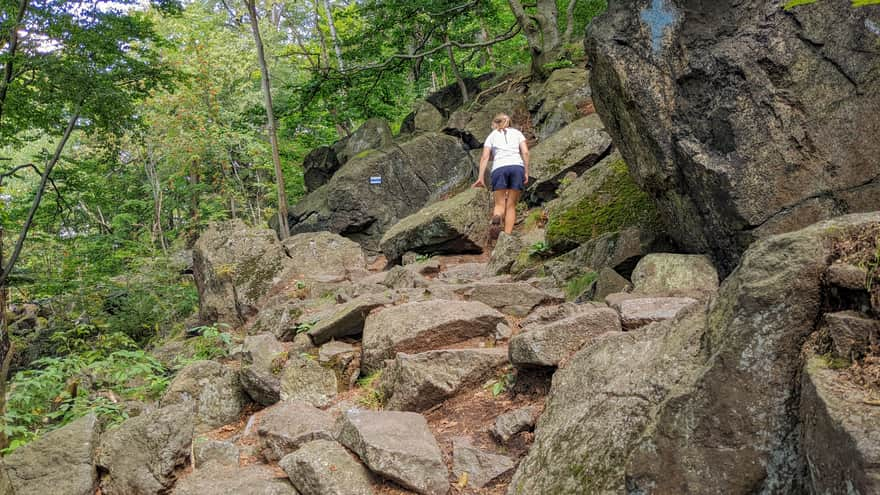
Ślęża from Sobótka
The town of Sobótka is located closest to Wrocław and is also well connected to Wrocław. You can reach Sobótka by train (the journey takes about 40 minutes). There are two trails leading from Sobótka to Ślęża (both merge approximately halfway up the ascent):
Yellow trail via Wieżyca - steeper but more interesting. At the trail, there is the Tourist House where you can have a warm meal, and in the summer season, there is also a Rope Park for children. The yellow trail also takes us through the Bismarck Tower:
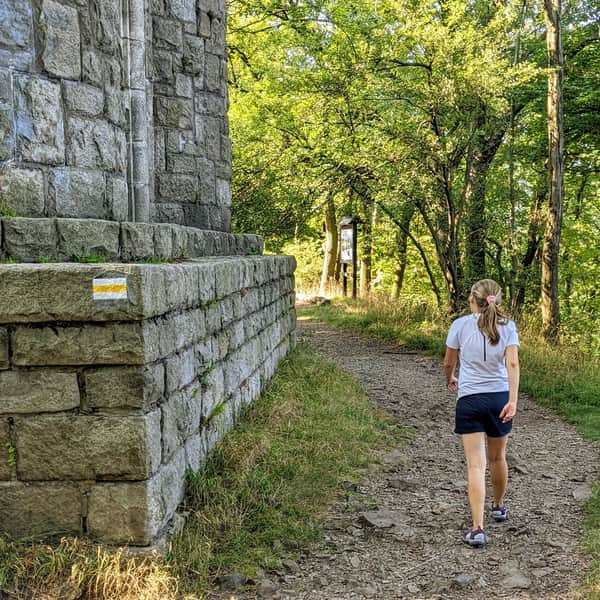
Medium
Ślęża from Sobótka - yellow trail through Wieżyca
Red trail - wide and more gentle:
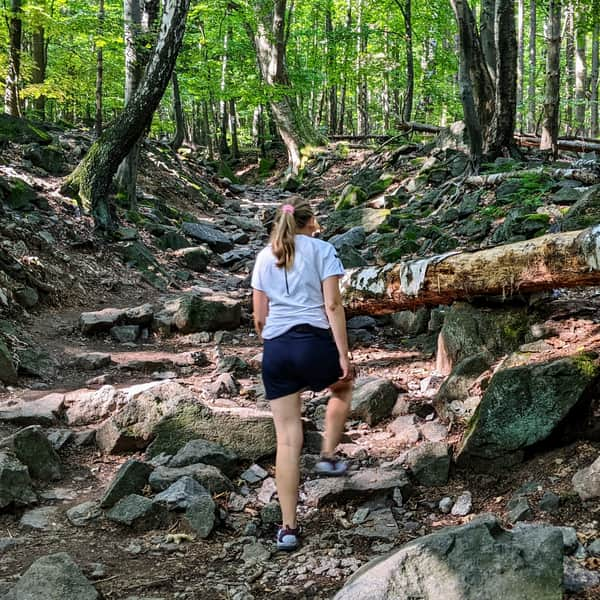
Medium
Ślęża from Sobótka - the red trail
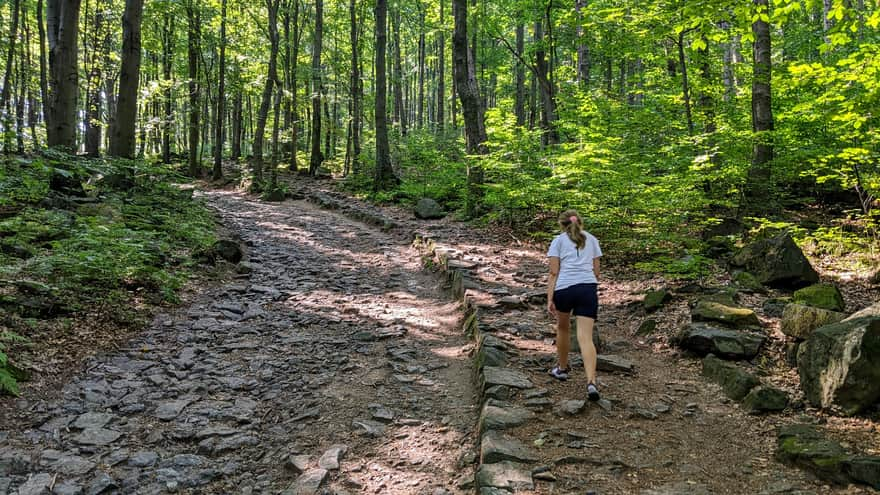
Ślęża - interesting facts
One of the biggest mysteries of this magical mountain is the stone cult sculptures of unknown origin found on its slopes. Two of them, "The Maiden with a Fish" and "The Bear," are located along the red trail, and another bear can be found at the summit of Ślęża. There are theories that these stone statues are remnants of the ancient Slavic cult and were created several centuries before our era. Currently, it seems more likely that they are stonemasonry works from the medieval period.
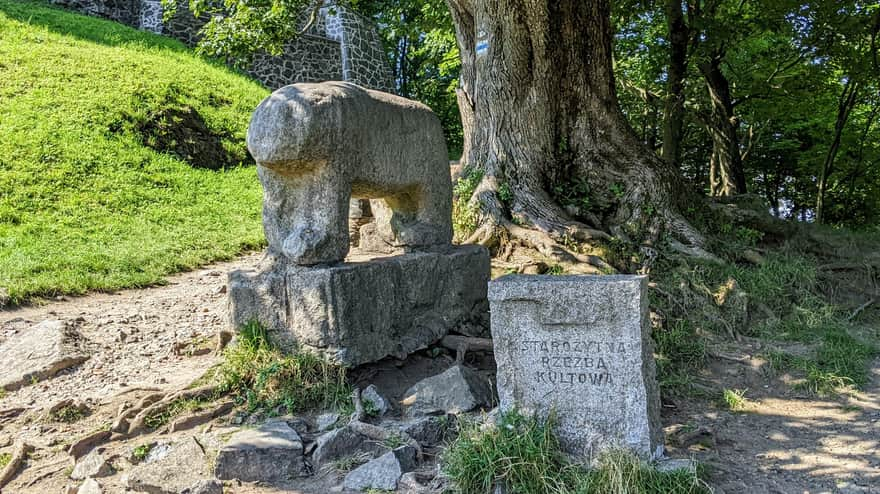
Ślęża (718 m above sea level) - attractions at the summit
Ślęża is a peak with a height of 718 meters above sea level. From there, you can see the Sudetes Mountains and the Silesian Lowland. In Slavic languages, the word "ślęga," which is associated with the mountain's name, meant mud and wet weather. The massif was once under a glacier, and the surrounding areas were only a wet bog - perhaps that's where the name Śląsk (Silesia) comes from? At the summit, there is the Tourist House where you can have a warm meal. Until recently, it was a mountain shelter, but unfortunately, the water sources that supplied the building dried up, making it impossible to accommodate tourists at the shelter level. Currently, water is transported there.
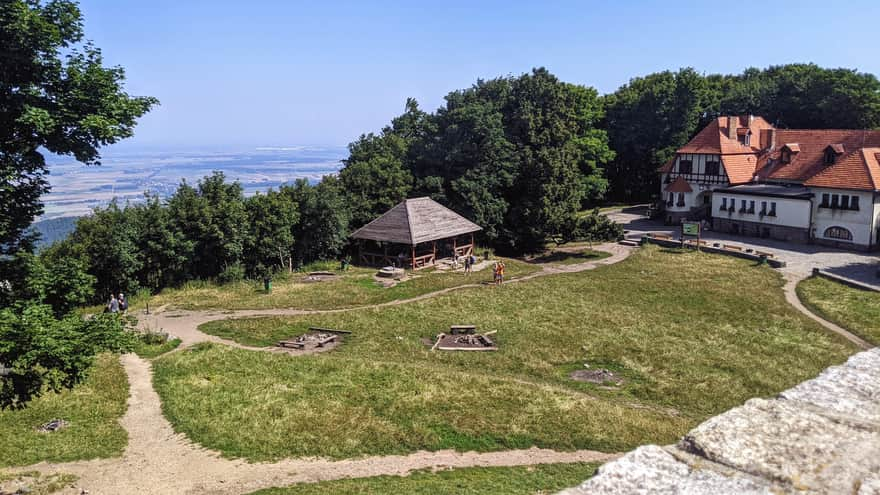
Observation Tower
At the summit of Ślęża, there is a publicly accessible, free observation tower. The path to the tower starts behind the church, right next to the stone "bear." Climbing the tower is not easy, especially for people with small children. The stairs are steep, and the platforms are very narrow. It is advised not to climb the tower during a storm.
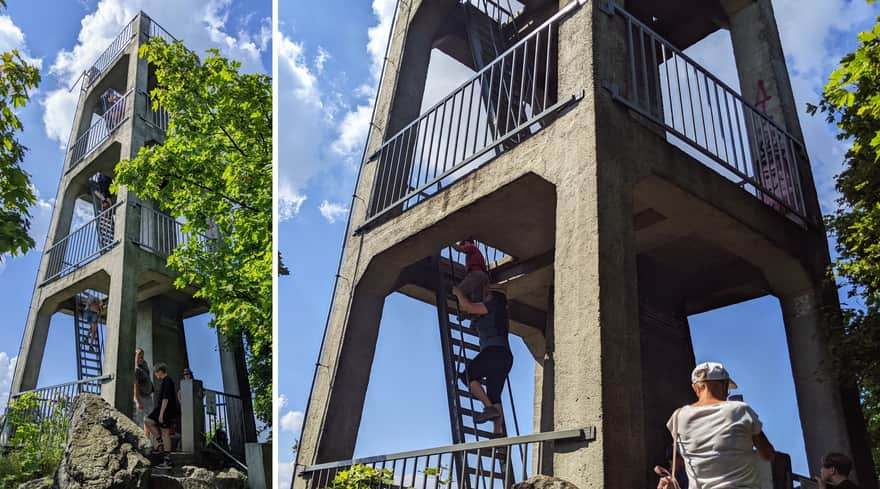
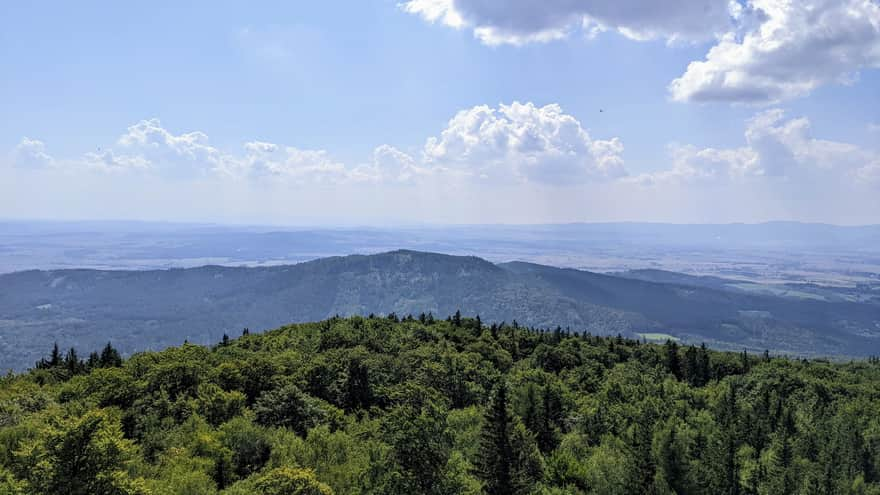
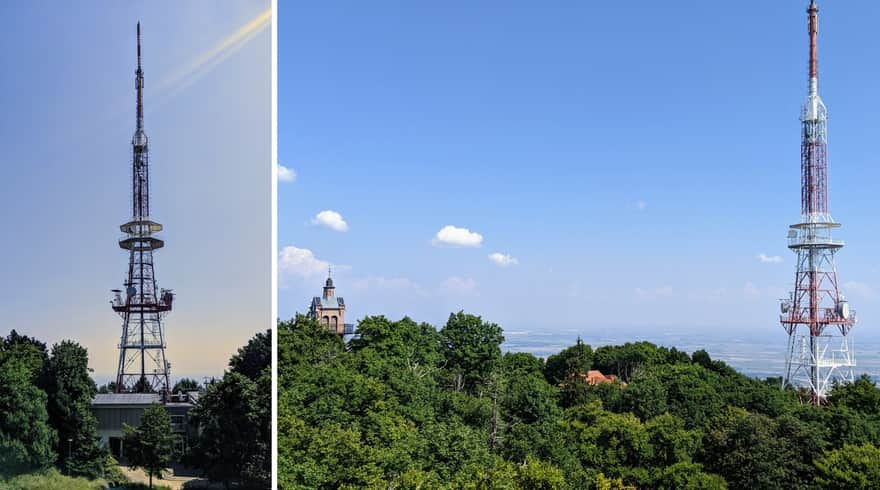
Church on Ślęża
The Church of the Visitation of the Blessed Virgin Mary was built on the ruins of a medieval stone castle. Currently, fragments of the castle walls can be seen through a glass pane in the church floor.
- Visiting the church on Saturdays and Sundays from 11 am to 5 pm (free)
- fee for entering the observation tower and descending to the underground, where you can see the apses, i.e., fragments of the former castle walls - 5 PLN.
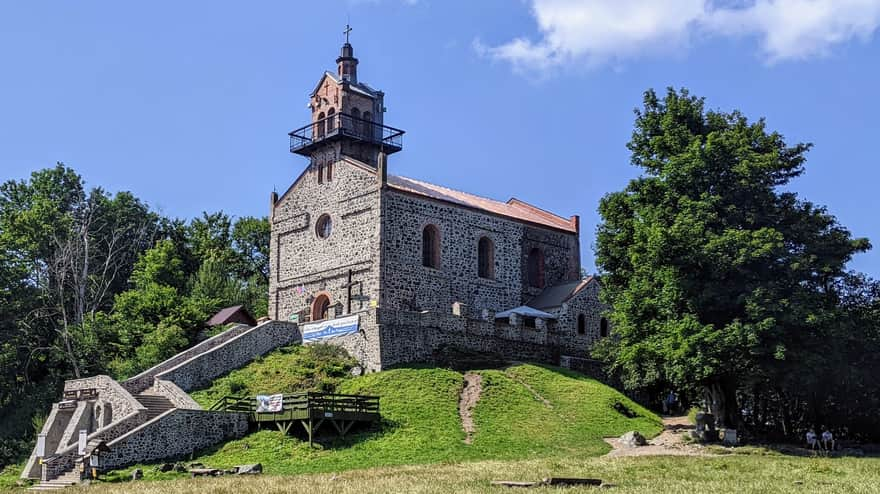
The Legend of the Origin of Ślęża and the Sudetes
According to legend, there used to be an entrance to hell in the vicinity of present-day Sobótka. The devils wanted to bury the whole land with stones and create mountains instead of fields and fertile lands. The work was to be completed on Midsummer's Eve. How did it end? Discover the legend of the origin of Ślęża and the Sudetes.
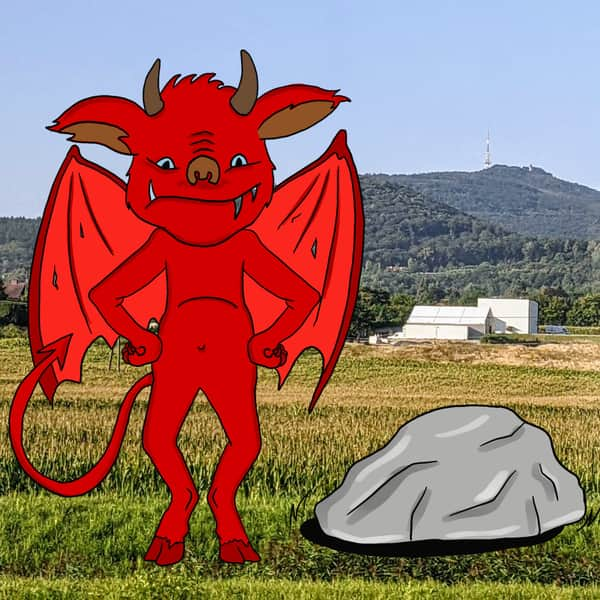
Legend - How the Sudetes and Mount Ślęża Were Formed
According to legend, there used to be an entrance to hell in the vicinity of present-day Sobótka. ...
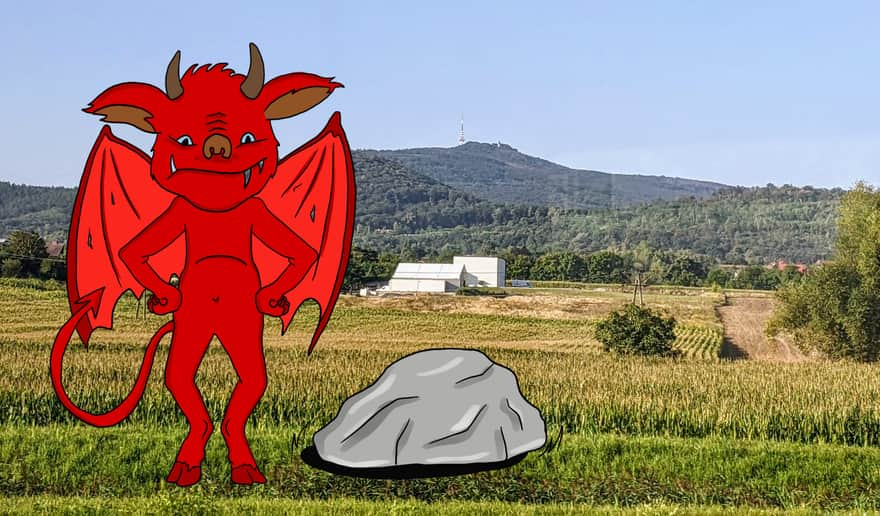
Publish Date: 2022-10-14
Last Updated: 2023-09-03
More in the Region Wrocław (Wrocław)
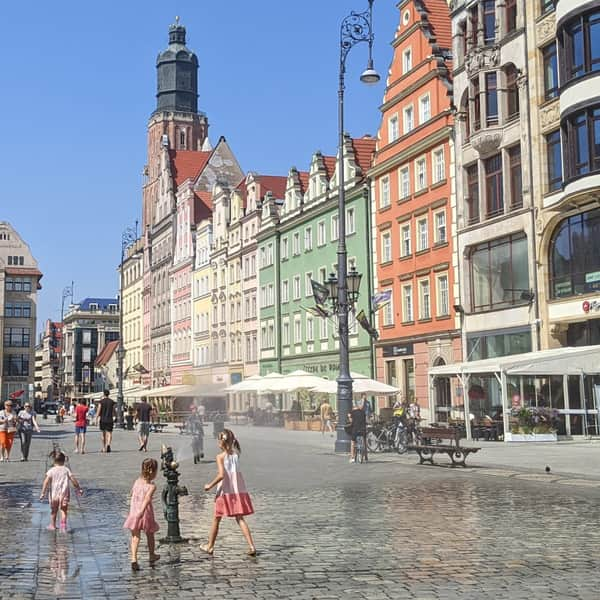
Total Length 2 km

